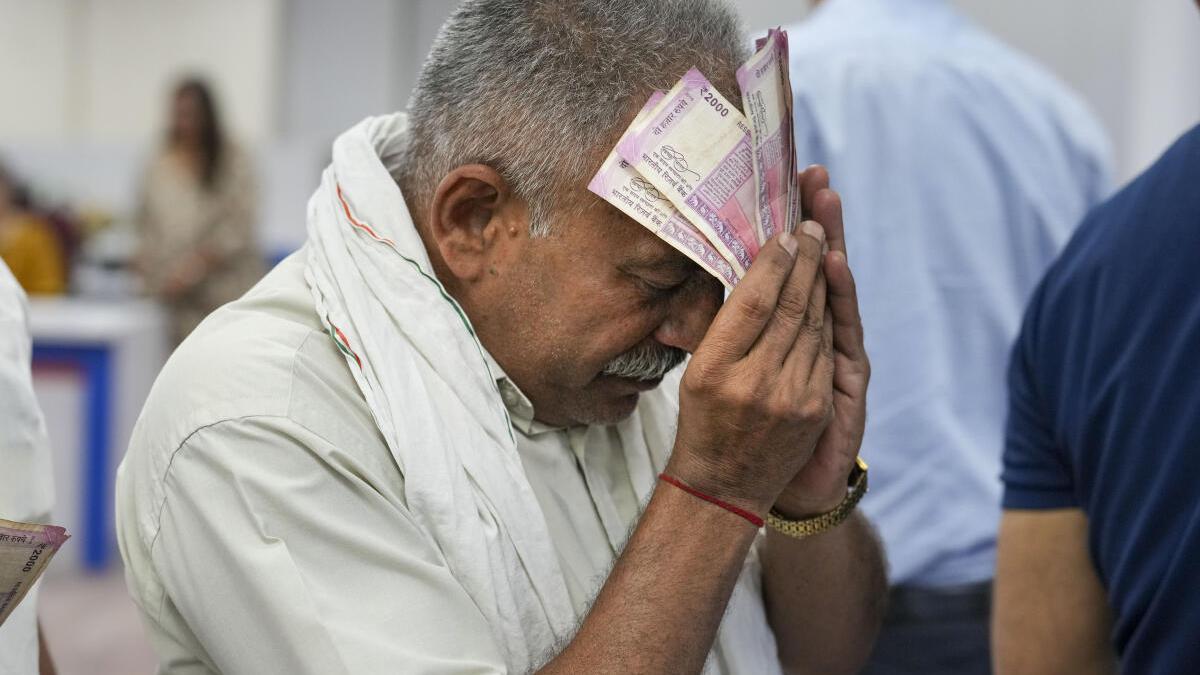The Reserve Bank of India (RBI)’s move to withdraw ₹2,000 banknotes from circulation on May 19, 2023, was a stark reminder of the ghosts of demonetisation. In a press release, the central bank justified the move by stating that the banknote, which was introduced to meet the currency requirement after ₹500 and ₹1,000 banknotes were withdrawn in November 2016, had fulfilled its objective. The RBI also cited its ‘Clean Note Policy’ to contend that the ₹2,000 notes were nearing the end of their estimated life span of 4-5 years as the majority of them were issued before March 2017. Its statement also said that ₹2,000 notes were not commonly used for transactions and that banknotes of other denominations were adequate to meet the demand.
As of March 2023, the share of ₹2,000 notes in the total value of banknotes in circulation had dipped to 10.8% compared to the 50% share they had by the end of March 2017. Over three-fourths or 77% of the total value of banknotes are now accounted for by ₹500 banknotes. This is in stark contrast to the pre-demonetisation period where two high-value currency notes — ₹500 and ₹1,000 — together accounted for the lion’s share of the banknotes in circulation.
Chart 1 shows that the volume of ₹2,000 banknotes in circulation began undergoing a gradual decline after peaking in 2018 at 33,630 lakh pieces. By the end of March 2023, the volume had dropped by 46% to 18,111 lakh pieces. Moreover, the printing of ₹2,000 notes were stopped in 2018-19. According to the RBI’s statement, this happened because the stock of banknotes in other denominations was adequate to meet the currency requirement of the public.
While the supply of ₹2,000 notes was stopped, the supply of ₹500 did not see a commensurate rise and remained stagnant. With the void left by the withdrawal of the ₹2,000 banknote, the supply of ₹500 could increase or another high-value currency can be introduced. This would push up the printing cost of notes incurred by the central bank.
According to the government, the decision to cancel the legal tender status of the high-denomination notes of ₹500 and ₹1,000 was taken to curb terror financing through the proceeds of Fake Indian Currency Notes (FICN) and to counter the hoarding of black money. The press release by the Ministry of Finance then said, “High denomination notes are known to facilitate the generation of black money. In this connection, it may be noted that… the total number of banknotes in circulation rose by 40% between 2011 and 2016.”
In the seven-and-a-half years since demonetisation, there has been a 36% rise in the number of currency notes in circulation. As far as counterfeit notes are concerned, fake notes in the denomination of ₹2,000 have remained low and are in decline. But more than 91,000 fake ₹500 notes were detected by the end of March 2023. While this number is much lower than the number of fake currency notes detected of the withdrawn ₹500 banknotes, it has been on a consistent rise since its introduction only six years ago.
Source: The data for the charts have been sourced from various editions of the Reserve Bank of India’s annual reports.
nihalani.j@thehindu.co.in
Also read: Data | While fake ₹500 notes double, conviction rates for counterfeiting cases remain around 30%. Read more.











